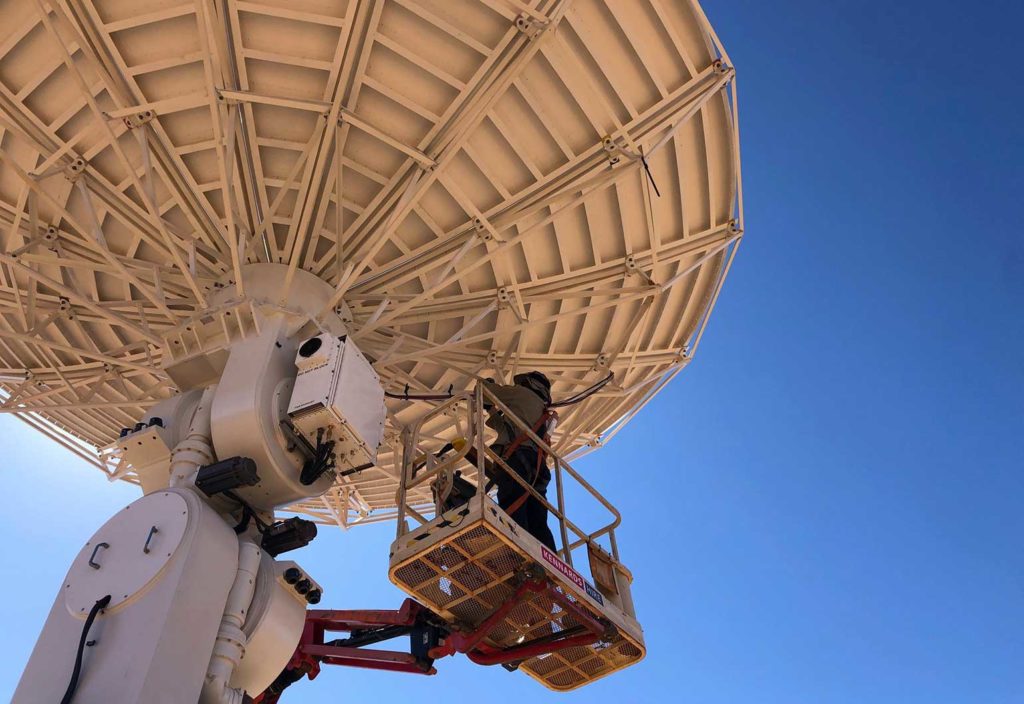A pair of state-of-the-art commercial satellite ground stations in Alice Springs will transform Australia’s capability in earth observation and provide economic opportunities for Indigenous people.
The first of its kind on Indigenous land, the infrastructure has the potential to reduce the latency for high resolution earth observation imagery down from hours or days to just minutes.
It will enhance Australia’s capability in disaster management, environmental monitoring, border protection and search and rescue.
Indigenous Business Australia (IBA) provided the funding for the project, which was built and project-managed by Indigenous companies, including the Centre for Appropriate Technology (CfAT) and its subsidiaries Ekistica Ltd and CfAT Satellite Enterprises, as well as Ingerreke Commercial, which laid the concrete foundations in December.
CEO of CfAT Satellite Enterprises Peter Renehan said the facility would put Aboriginal people at the forefront of Australia’s growing space sector.
“There is currently a limited supply of suitable earth observation ground stations in Australia,” he said.
“Here in Alice Springs we are strategically located to take advantage of this fast-growing market. The site is so perfectly located that we will be able to downlink imagery across the whole of Australia’s land and waters.”
Renehan added that the station would generate ongoing employment and training opportunities for the local Indigenous community.
“We are very excited about the future of this technology, which we know has the potential to benefit many of our communities, like our Indigenous rangers who look after land and sea country and can use high resolution imagery from space to do their jobs,” he said.
IBA chairperson Eddie Fry said the multimillion-dollar investment was a boon for both the Indigenous community and the Australian space program.
“The technology has many commercial applications, such as for remote asset management, agriculture, carbon abatement, insurance, finance and mining,” he said.
“This is just the beginning and we can see a bright future for CfAT, which is well-positioned to become one of Australia’s leading participants in the satellite and space industry.”
Fry added that the facility would generate commercial returns for Indigenous Australians, as well as benefits for the wider Northern Territory.
‘Aboriginal and Torres Strait Islander people own or control significant areas of land in remote areas where there is limited economic potential. This first-of-its-kind development on Aboriginal land gives the community both economic and social returns,” he said.
“CfAT will invest in training Aboriginal people in maintaining the facility and build its capacity for bringing innovative technology-based programs to Aboriginal people in the region.”
